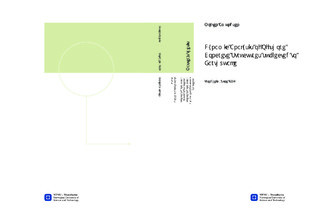Dynamic Analysis of Offshore Concrete Structures subjected to Earthquake
Master thesis
Permanent lenke
http://hdl.handle.net/11250/237099Utgivelsesdato
2012Metadata
Vis full innførselSamlinger
Sammendrag
This thesis attempts to study the dynamic response of offshore concrete structures by sequentially introducing physical phenomena which are related to those types of analyses. This is done by modelling a simplified part of a typical offshore concrete structure, with the purpose of establishing a reference case, on which more advanced analyses can be based, as well as evaluate simplified approaches that serve to shorten the analysis time.To establish characteristic earthquakes for the selected return periods of 475, 1000, 3000 and 10 000 years, a seismic hazard analysis is performed for an area slightly off the southwest coast of Norway. Here, information from 964 earthquakes was collected, such that the Gutenberg-Richter relationship could be established. Based on this, 50 000 earthquakes were generated based on Monte Carlo simulations, which served as an extrapolation from which order statistics could be performed. The determined characteristic earthquake parameters for the different return periods were found to have a remarkable similarity with the seismic zonation maps used in most design codes. Finally, the applied accelerogram for a given return period was simulated from a response spectrum which was chosen to be similar to the mean response spectrum for that return period.A comparison was made between the time history and response spectrum analysis, where three modal combination methods were evaluated. It was found that the results were either impractically conservative, or dangerously unconservative for all return periods, suggesting that the response spectrum analysis is not applicable for the investigated structure.A material model which included plasticity was evaluated, which resulted in margin-ally lower stresses, slightly reduced eigenfrequencies and small changes displacements of the top of the shaft. With the inclusion of elastic stiffness degradation, the results were similar, leading to the conclusion that plasticity is an unnecessary complication, as the large dimensions of the structure combined with the low seismicity of the North Sea results in a structural behaviour which is approximately elastic for all return periods.Two methods for the modelling of surrounding water was tested. The first was the added mass method, where the stresses mostly increased, except for the 10 000-year earthquake. The second method was an acoustic-structural interaction, where the fluid around the structure was modelled. This resulted in similar stresses for all return periods, and gives credibility to the simplified method. For either methods, the eigenfrequencies were reduced significantly.The soil upon which the structure rests was included into the analysis by two methods. The first method involved the use of springs and dashpots which were made to represent the stiffness and damping of the soil. The other method was a finite element analysis of the soil layer. Both soft and hard soil was tested, and for the soft soil, the stresses were radically reduced, as the structure became almost fully isolated from the earthquake. The stiffer soil resulted in higher stresses. The two methods agreed for the soft soil, but not for the hard soil. This was found to be caused by the spring method being overly simplistic.
